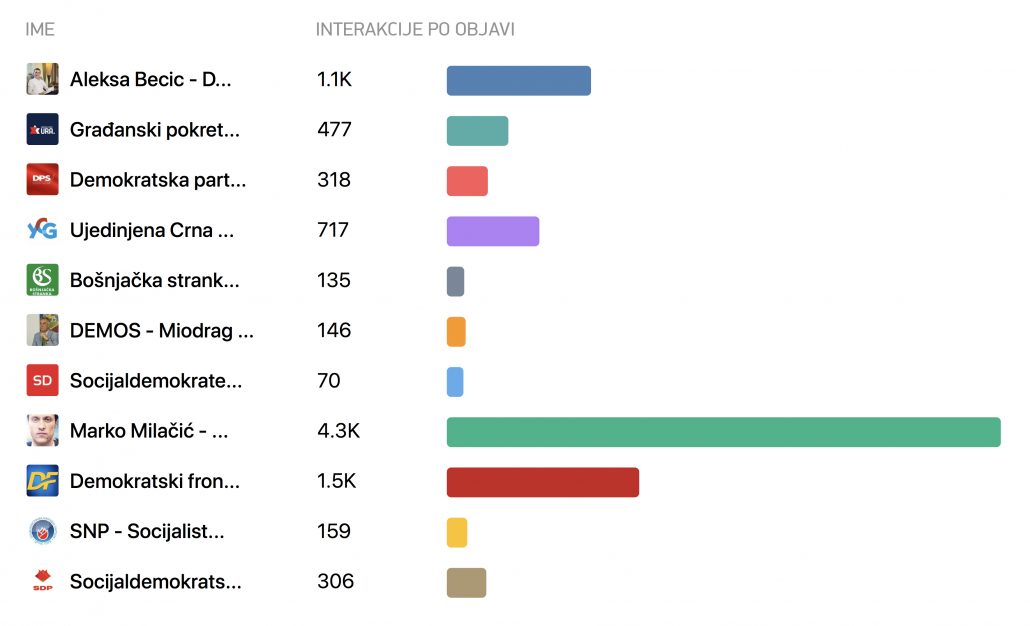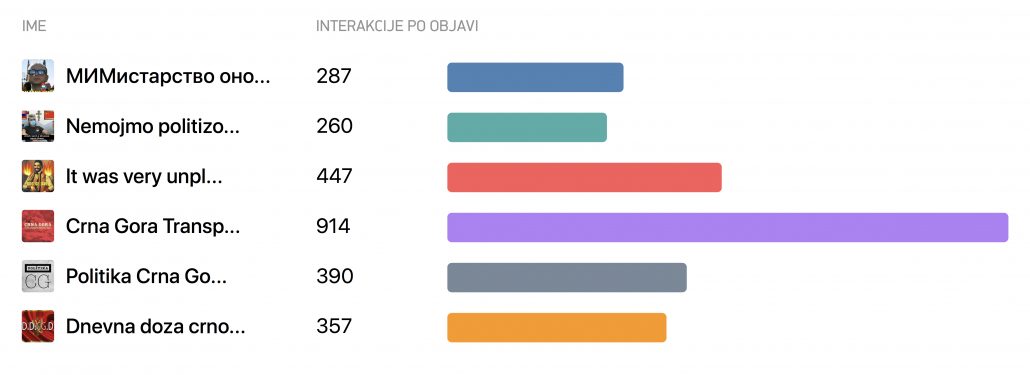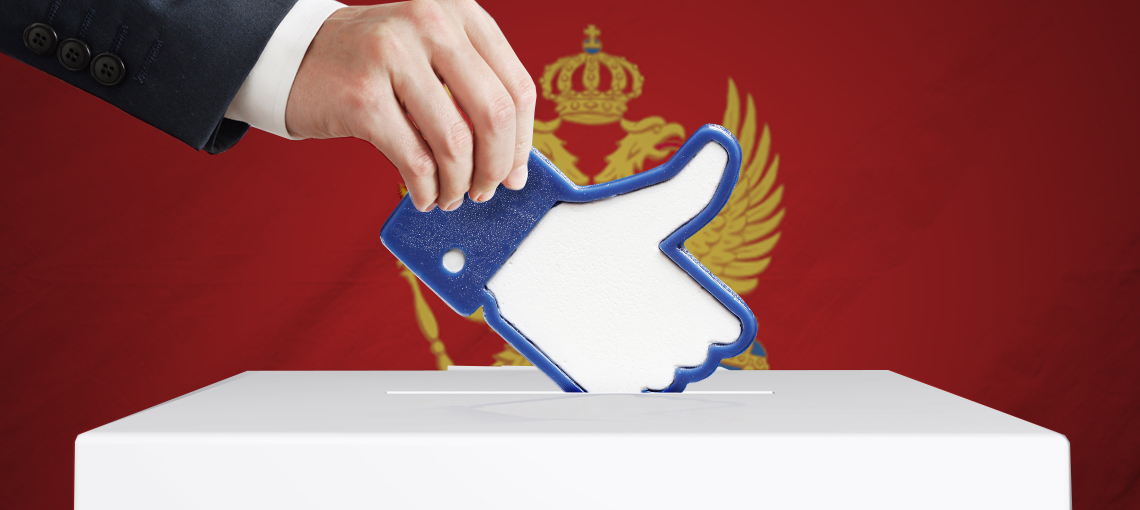All around the world, social media have been actively used as the means of influence in the prominent events and political processes. However, Facebook is the most used when it comes to the election campaigns, thanks to its features and tools. It offers a feature to collect numerous data easily, which enables the targeting of the groups on the basis of different criteria (users’ preferences, location etc.) This way, the users susceptible to a particular content are easily identified.
Examples of the political influence on social media are numerous. During 2019, President Donald Trump spent almost 20 million dollars on ads on Facebook. Russian meddling in the USA elections in 2016 is also problematic. On that occasion, Russian hackers allegedly meddled by launching misleading and false Facebook ads, intended for the users in the USA.
Influencers also have an important role in the election campaigns. What is indicative is the fact that not only influencers with many followers are engaged in the propaganda of political parties on social media or inviting people to participate in the elections, but also the so-called micro-influencers with only a couple of thousands of followers.
Where are our political parties on Facebook?
According to the data from 2019, Montenegro has 51 political parties, the most per capita in the region. However, in the race for parliamentary elections scheduled for August 30, 2020, there are about a dozen of them.
Since the coronavirus pandemic made the campaign in real word difficult, some parties decided to use the virtual world (social media) for this purpose. In Montenegro, it is usually Facebook, as the most used social network.

The DFC analyzed eleven Facebook pages of the Montenegrin political parties during the period June – July 2020: Aleksa Bečić – Demokrate – Demokratska Crna Gora, Građanski pokret URA, Demokratska partija socijalista Crne Gore, Ujedinjena Crna Gora – Zvanična stranica, DEMOS – Miodrag Lekić, Socijaldemokrate Crne Gore, Marko Milačić – Prava Crna Gora, Demokratski front, SNP – Socijalistička narodna partija Crne Gore – СНП ЦГ, Socijaldemokratska partija Crne Gore – SDP) and Bošnjačka stranka.
The acquired data indicate which political parties had the most interactions per post (total number of likes, shares, and comments), the most likes on the page as well as whether the interaction has varied as the elections are approaching. It was noticed that particular political parties used the option of sponsoring in order to amplify their reach, which collides with the organic interactions on these pages.
Milacic’s page – the most interactions and likes
The page of Marko Milacic – Prava Crna Gora had the most interactions per post (4.3k) in June. This page also generates the most likes (70.1k). The next are the pages Demokratski front with 1.5k and Aleksa Bečić – Demokrate – Demokratska Crna Gora with 1.1k of interactions per post. Besides this, both pages obtained many likes; therefore, the page of the DF has 51.3k while the Democrats have 44.4k of likes.

Other pages of political parties have less than a thousand interactions per post in June. However, Ujedinjena Crna Gora – Zvanična stranica stands out in this group and despite the lower number of likes (5.8k) generates 717 interactions per post.
In July, Milacic’s page still had the most interactions per post (3.4.k) while this figure is almost halved in the case of Demokratski Front and Demokrate accounting for 757 and 643 interactions per post respectively. The data indicates that not all pages of political parties generate a significant increase in the number of interactions per post, even though the elections are approaching.

The pages of other political parties generate a similar trend in July as it was the case with June. Therefore, the number of interactions per post still does not surpass a thousand. However, a significant increase in the number of interactions is noticeable on the page of the Social democrats of Montenegro, which bounced from 70 in June to 369 interactions per post in July.

When it comes to page likes, the biggest growth for the period June-July is registered on the Marko Milacic – Prava Crna Gora Facebook page with 6.7k likes, as well as on the Aleksa Becic – Demokrate – Demokratska Crna Gora with 6.1k likes. This is followed by Demokratski front (3.2k), Socijaldemokrate Crne Gore (1.8k), Demokratska partija socijalista Crne Gore (1.5k) and Ujedinjena Crna Gora – Zvanicna stranica (1.4k). Other pages of the political parties generate the growth of a less than a thousand page likes for the two monitored months.
Meme pages joined the political game
Apart from being fun, meme pages popular on Facebook use their rhetoric to influence public opinion. With a characteristic dose of satire, they have frequently been used as a tool of influence, which is most visible at the key political moments – in this case, the election campaign in Montenegro.
Otavio Freire, chief technology officer and president of SafeGuard Cyber, told for The Guardian last year: The visual nature of content makes it easier to stoke discord by speaking to audiences’ beliefs through memes. This content is easy and inexpensive to produce but more difficult to factcheck than articles from dubious sites.

Meme pages, divided between the position and the opposition just like the domestic political scene, find sources of their content in the current political reality, interpreting it in different manners. It is presumed that some of them have been created by political parties themselves, while others are obviously supporting specific political parties and even the Metropolitanate of Montenegro and the Littoral in the context of the elections.
That way, the politics have been transferred to the virtual world, and in that sense, several opposition-oriented meme pages come to the fore: МИМистарство оностраних послова, Nemojmo politizovati proteste, It was very unpleasant/Psalam 118 (which call themselves meme serdars), Dnevna doza crnogorskih dubioza, including two position-close meme pages – Crna Gora Transparentno and Politika Crna Gora.
Figures and statistics
In the context of the upcoming elections, it was noticed that the opposition-oriented meme pages have had a larger number of posts on a daily basis. Just meme page It was very unpleasant/Psalam 118 had 28 posts per day on average for the period June-July. Also, by random sharing, they amplify the content from other meme pages with similar views. On the other hand, pages close to the government account for a smaller number of posts – several posts on a weekly or monthly basis, but some of their posts have more than a thousand likes.

The analyzed data clearly shows us that depending on the political option they are more inclined to, some meme pages criticize the opposition and their leaders. Others, on the other hand, call for opposition unity, insist on voting instead of election boycott, and criticize the ruling party – the DPS, and the President of Montenegro. The SPC and the Metropolitanate of Montenegro and the Littoral is also a frequent topic of the meme pages; some of them express their support to Metropolitan Amfilohije. Sometimes, admins of such pages see themselves as persons whose strategies should be followed by the church to overthrow the government.

When it comes to the statistics for June-July 2020, despite its small number of posts (18) for the past two months, meme page Crna Gora Transparentno has the largest number of average interactions per post (914), at the same time being the most liked meme page (18.9k). This is followed by meme pages It was very unpleasant/Psalam 118 with 447, Politika Crna Gora with 390, and Dnevna doza crnogorskih dubioza with 357 interactions per post. For the same period, meme pages МИМистарство оностраних послова and Nemojmo politizovati proteste have 287 and 260 interaction per post respectively. It is important to mention that meme page It was very unpleasant/Psalam 118 has achieved the highest growth in the number of likes (5.4k) for the period June-July.

